Exploring The Japandi Design And Decor Style
What Is The Japandi Design Style?
Japandi design is a design style that blends elements of Japanese minimalism and minimalist design with Scandinavian design and decor principles. Japandi combines the simplicity, elegance, and functionality of Japanese design with the cozy, warm and comfortable feel of Scandinavian design to create a harmonious and balanced aesthetic.
The Japandi design style features clean lines, natural materials and a more neutral color palette that emphasizes the beauty of simplicity. It prioritizes functionality and comfort, while also incorporating elements of nature, such as plants or natural light. The furniture is usually low-slung, and the decor itself will include minimal but carefully curated decorative pieces.
Some key features of Japandi Design include:
- Natural Materials: Japandi design emphasizes the use of natural materials such as wood, bamboo, linen, and wool. The use of natural materials gives the space a warm and organic feel.
- Minimalism: This design style is characterized by its minimalistic approach. There is an emphasis on creating a clutter-free space, with only the essential items being displayed.
- Neutral Colors: Japandi design features a neutral color palette, with a focus on shades of white, beige, grey, and black. These colors create a calming and soothing atmosphere.
- Functionality: Japandi design prioritizes functionality and practicality, with a focus on simplicity and clean lines. The furniture is often low-slung and multi-functional.
- Warmth: The Scandinavian influence in Japandi design is evident in the use of warm and cozy rugs / textiles like soft blankets and area rugs to add a comfortable and inviting feel to the space.
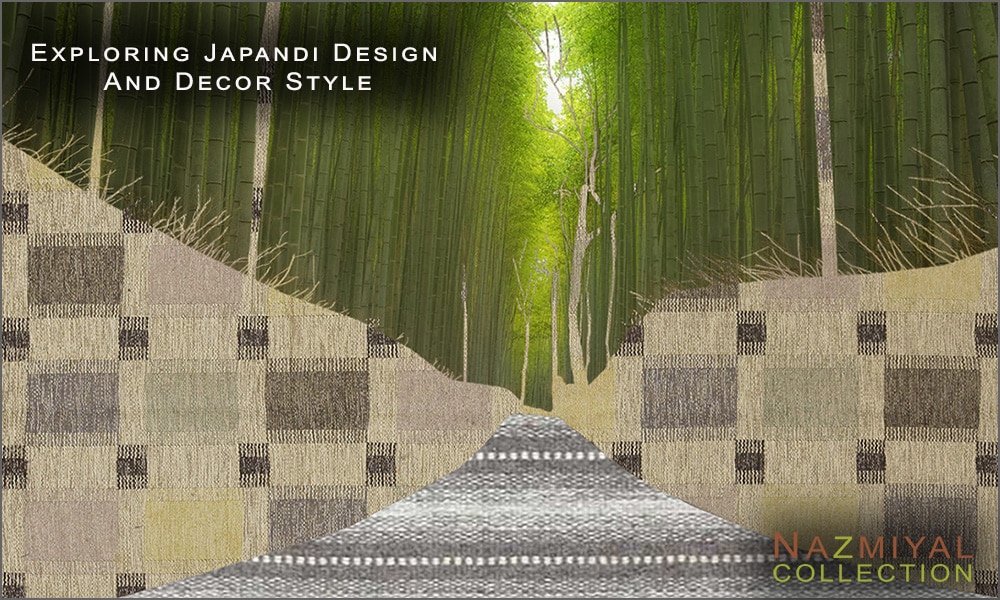
Japandi Style Design
Overall, Japandi Design is a calming and understated design style that incorporates elements of both Japanese and Scandinavian design to create a harmonious and balanced aesthetic.
You may want to see out: Neutral rugs | Grey Black Color Rugs | Brown Earth Tone Rug Collection
What is the meaning of Japandi?
The word “Japandi” is a portmanteau (the act of combining two or even more words that relate to a single concept) of two words: “Japan” and “Scandinavia.” The word “Japandi” refers to a design and decorating style that blends the principles of Japanese minimalism and Scandinavian design to create a harmonious and balanced aesthetic.
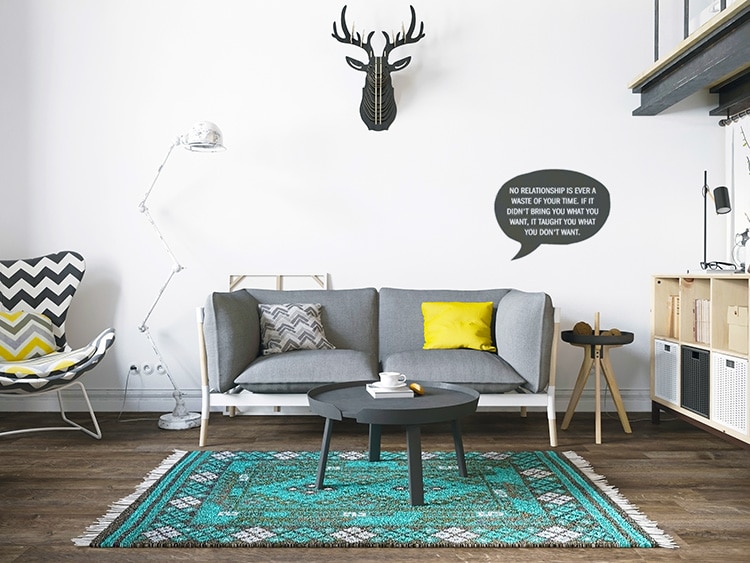
Minimalist Scandinavian Boho Chic Interior Design
The Japandi style combines the simplicity, elegance, and functionality of Japanese design with the cozy, warm and comfortable feel of Scandinavian design. When done right, the result is a minimalist yet inviting interior design that emphasizes natural materials, neutral colors, clean lines and a focus on functionality and comfort.
What is the philosophy of Japandi?
While there is no single philosophy that defines Japandi, the design style is often associated with certain guiding values and principles.
Here are some of the key guiding Japandi principals:
- One of the key principles of Japandi is simplicity.
- Both Japanese and Scandinavian design emphasize simplicity and Japandi combines this principle to create a minimalist aesthetic that emphasizes clean lines, uncluttered functional spaces.
- Another important guiding principal of Japandi is balance.
- Japanese design emphasizes harmony and balance, while Scandinavian design emphasizes coziness and warmth. Japandi blends these principles to create a balanced and harmonious space.
- Natural materials and textures are also important in Japandi design.
- Both Japanese and Scandinavian design value the use of natural materials such as wood, stone and natural fibers. Japandi emphasizes the beauty of these natural materials, often using them in a way that highlights their natural textures and colors.
- Japandi design also emphasizes the importance of mindfulness and intentionality.
- Both Japanese and Scandinavian design emphasize the importance of living in the present moment and creating a space that promotes well-being and mindfulness. Japandi encourages us to be intentional in our design choices and to create a space that reflects our values and promotes a sense of calm and tranquility.
What is the origin of Japandi style?
The origins of Japandi can be traced back to the mid-2010s when interior decorators and design bloggers began to notice the similarities between Japanese minimalism and Scandinavian design. These two interior design styles share a focus on simplicity, natural materials and clean lines. They also both prioritize function and practicality. By blending these two design styles, interior decorators were able to create a new aesthetic that combined the best of both worlds – the Japandi Design Style.
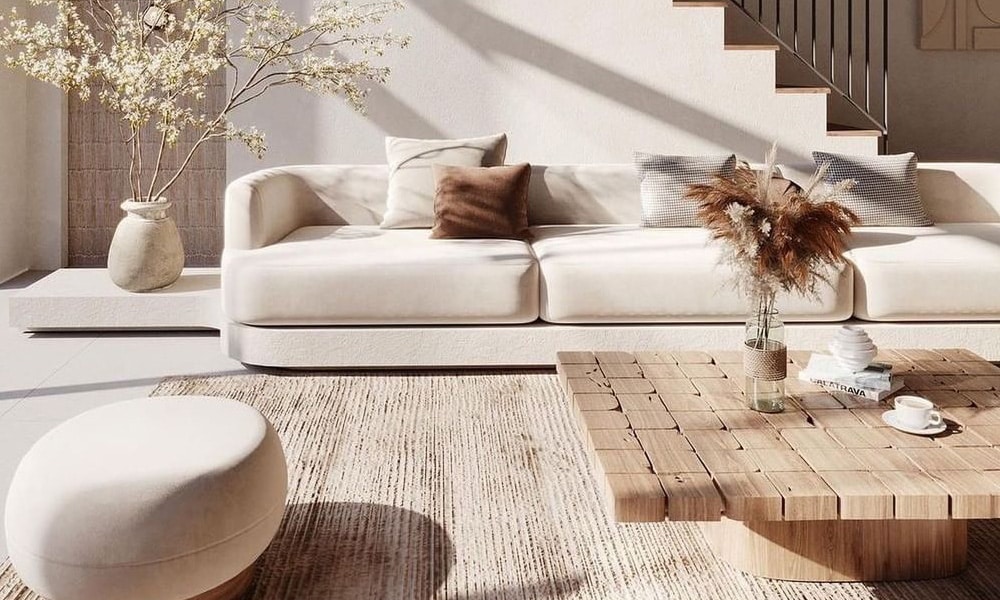
Japandi Style Interior Design Approach
Today, Japandi has become a popular interior design style that is often used in home decorating as well as fashion and even product design. The Japandi style is known for its minimalist aesthetic, natural materials, and muted color palette. It has become a popular choice for those who value simplicity, harmony and balance in their design choices.
What are the rules of Japandi style?
There are no hard and fast rules for Japandi style.
That said, there are some general principles that can help guide your Japandi design choices:
- Simplicity: Japandi is characterized by clean lines, uncluttered spaces, and a focus on functionality.
- So keep your design choices simple and avoid over-complicating your space.
- Natural materials: Japandi emphasizes the use of natural materials such as wood, stone, and natural fibers.
- So incorporate natural materials into your design choices to create a sense of warmth and texture.
- Neutral color palette: Japandi is known for its muted color palette, which often features shades of white, gray, and beige.
- So use these muted neutral colors as a base and add pops of color sparingly.
- Minimalist accessories: Keep your accessories minimal and functional.
- So make sure to avoid over-decorating your space and choose pieces that serve a purpose.
- Lighting: Lighting is an important element of Japandi design.
- So you should use natural light to illuminate your space and incorporate soft, warm lighting to create a cozy atmosphere.
- Harmonious balance: Japandi design emphasizes the importance of creating a harmonious and balanced space.
- So make sure to balance your design choices by incorporating natural textures, creating symmetry and avoiding visual clutter.
- Mindfulness and intentionality: Finally, Japandi design encourages mindfulness and intentionality.
- So make sure to be intentional in your design choices and create a space that reflects your personal values that will promote a sense of calm and tranquility.
What’s the difference between wabi-sabi and Japandi?
Wabi-sabi and Japandi are two home decor and design styles that are strongly rooted in Japanese aesthetics. Though they do share many similar aspects, they also have some distinct differences.
For example, the Wabi-sabi is a Japanese philosophy and aesthetic that emphasizes the beauty of imperfection, transience, and simplicity. It celebrates the natural, authentic and unpretentious. It also encourages us to appreciate the beauty of things that are imperfect, aged and worn. Wabi-sabi is characterized by asymmetry, roughness, simplicity and a subdued color palette.
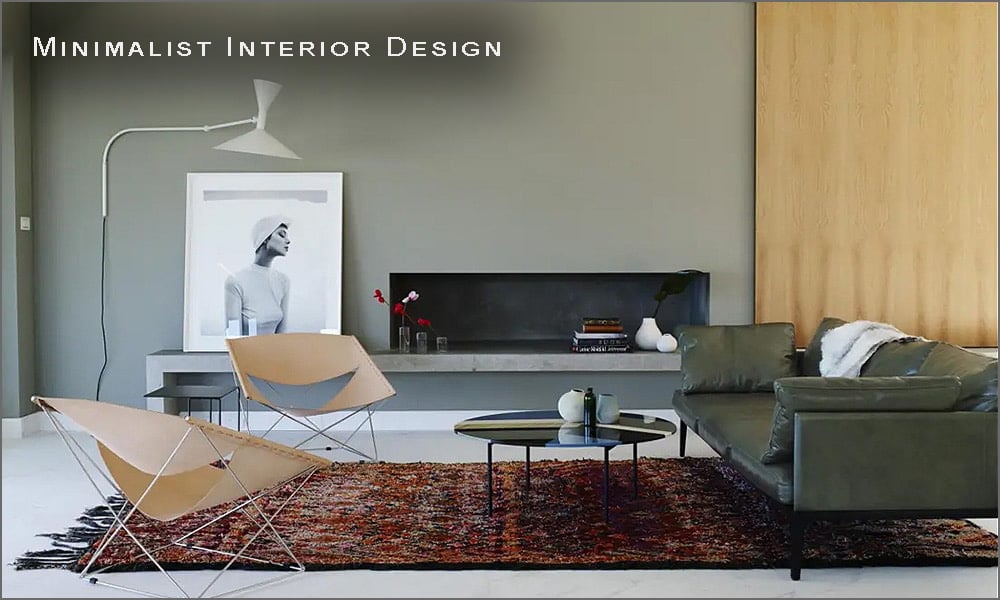
Wabi Sabi Minimalist Interior Design Style With Colorful Vintage Moroccan Rug
Japandi, on the other hand, is a design style that blends elements of Japanese minimalism with Scandinavian design principles. It combines the simplicity, elegance, and functionality of Japanese design with the cozy, warm and comfortable feel of Scandinavian design. This creates a harmonious and balanced aesthetic. Japandi design makes use of clean lines, natural materials, a neutral color palette and a strong focus on functional and comfortable living spaces.
So while both wabi-sabi and Japandi are both inspired by Japanese aesthetics, they have some different focuses and aesthetics. Wabi-sabi emphasizes the beauty of imperfection and the authenticity of natural materials, while Japandi blends Japanese minimalism with Scandinavian design to create a harmonious and functional aesthetic.
What is the difference between Scandi and Japandi?
Scandi and Japandi are two design styles that are often compared to each other, but they have some distinct differences.
Scandi, short for Scandinavian, is a design style that emerged from Scandinavia / the Nordic countries of Sweden, Norway, Denmark and Finland. It is characterized by clean lines, minimalism, and functionality, and it often features light, neutral colors, natural materials, and a focus on coziness and warmth. Scandi design is known for its use of wood, particularly light woods like birch or pine, and its emphasis on simplicity, practicality, and comfort.
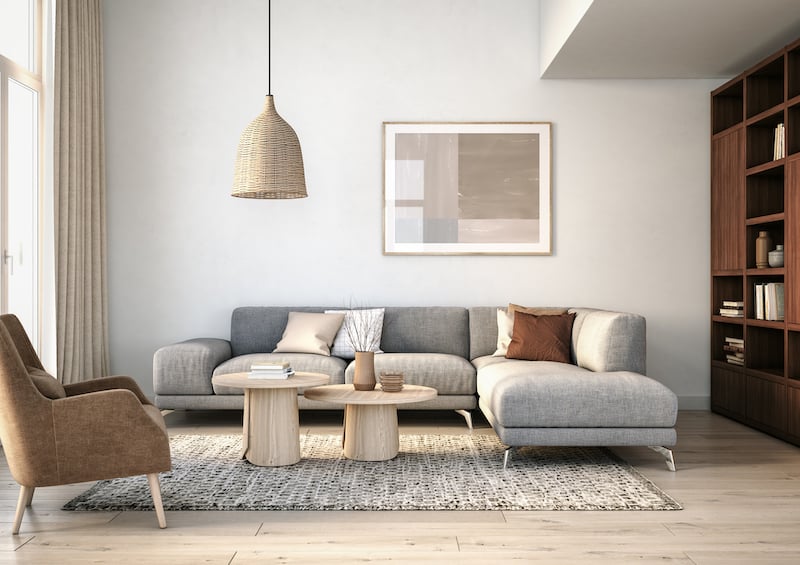
A living room with Scandinavian interior design.
Japandi, on the other hand, is a design style that blends elements of Japanese minimalism with Scandinavian design principles. It combines the simplicity, elegance, and functionality of Japanese design with the cozy, warm, and comfortable feel of Scandinavian design to create a harmonious and balanced aesthetic. Japandi design is characterized by clean lines, natural materials, a neutral color palette, and a focus on functionality and comfort.
So while Scandi and Japandi share some similarities, such as a focus on minimalism and natural materials, they have different aesthetics and influences. Scandi design is more focused on coziness and warmth, while Japandi design is more focused on creating a harmonious and balanced space by blending elements of Japanese minimalism with Scandinavian design.
Here are some area rugs for your next Japandi style design:
This interior design blog about the Japandi style design was published by Nazmiyal Antique Rugs












